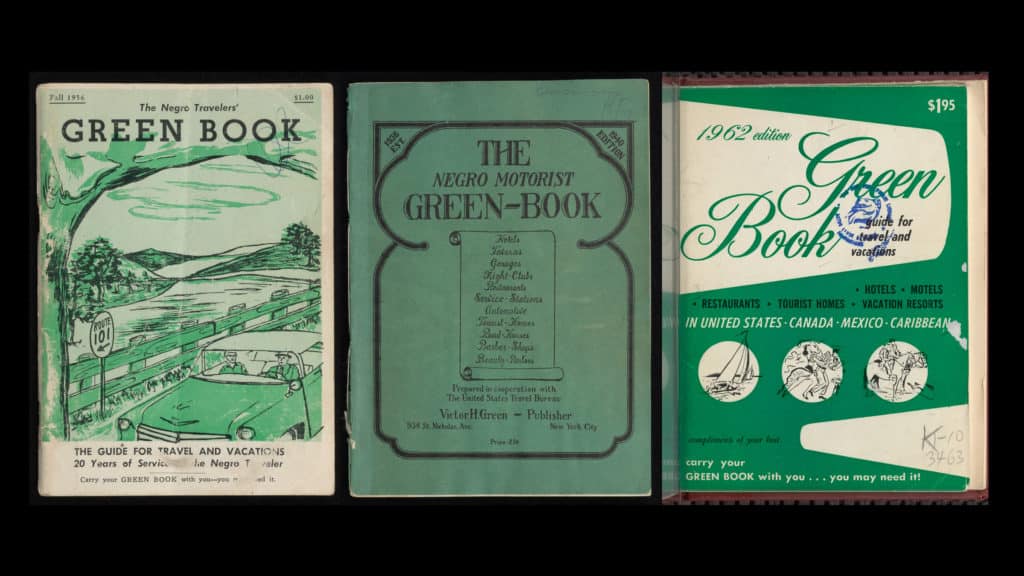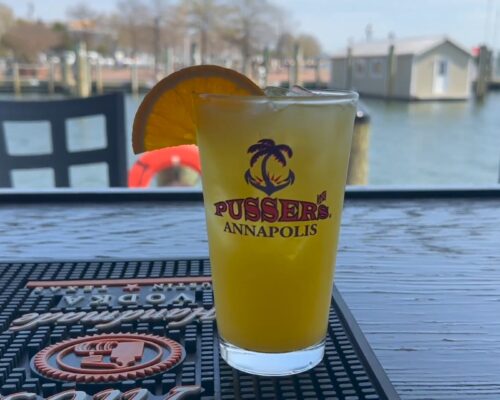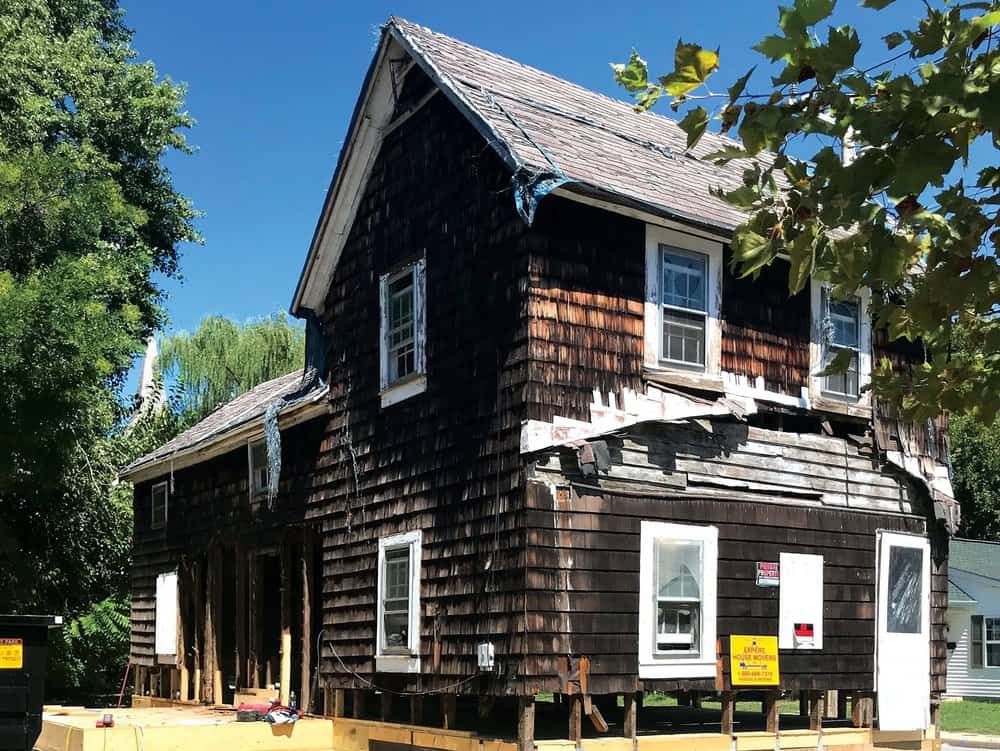Looking for the Green Book, today.
“We have no African American home open for tourism, but it’s coming in 2021. That is the Maynard-Burgess House,” Janice Hayes-Williams boasted. She is a seventh generation Annapolitan and a living encyclopedia of African American history in the state capital. In a trip down memory lane, Williams explained that the African American community of Annapolis is uncharacteristically long-standing, with generations-old ties to blue collar work at the Naval Academy and longshoremen jobs in “America’s Sailing Capital.” African American labor in the maritime and hospitality industries is integral to the visitor experience of the Chesapeake Bay.
During the early- to mid-1900s, it was hard to miss the thriving Black-owned boarding houses, restaurants, and social clubs. But those establishments have much older histories. In fact, the Maynard-Burgess house near City Hall was purchased in 1847 for $400. The owner, John Maynard, was a freeman whose job as a waiter (possibly at the City Hotel on Main and Conduit Streets) helped him purchase the freedom of his wife. He passed down the home to relatives, who operated it as a boarding house before selling it to Willis Burgess in 1914. The Burgess family held onto it until 1991. Within two years, ownership was transferred to the City of Annapolis. Nearly 30 years later, the Maryland Historical Trust and the City plan to open it as a tourist attraction and an exhibit space, showcasing Black life in the 19th and 20th centuries. This will be the latest in a spate of ongoing efforts by the City and the State to recognize Annapolis’s Black cultural history.
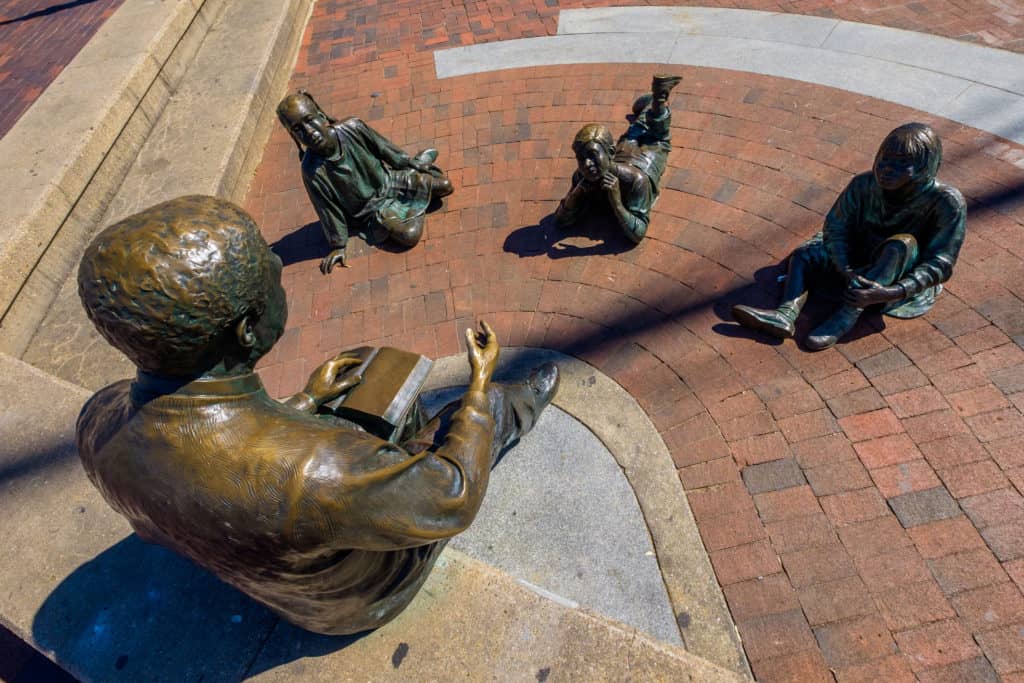
Preserving African American heritage in Annapolis has taken on a sheen of cultural tourism. The city has an informal Black heritage route. One of the most visited sites is the Kunte Kinte-Alex Haley Memorial, which incorporates the Kunta Kinte plaque, the Alex Haley statue, and the Memorial Story Wall at City Dock to tell the story of enslaved Africans who transited Maryland’s ports. Other lesser visited but historically important sites also include the People’s Park in the Old Fourth Ward which honors the former residents of the city’s thriving “Black Belt,” bulldozed in the 1960s to make way for a parking garage; and the Banneker-Douglass Museum for African-American History near Church Circle. These commemorative sites are what remain of a much more vibrant and robust African American presence. Less than a century ago, the Old Fourth Ward hosted many visitors who came for Tidewater cuisine and an escape from overcrowded cities. For many Black travelers, it was through the hospitality of Black Annapolis that they came to know and love Crabtown.
Today, many of those landmarks are all but forgotten, save for the state of Maryland’s geo-mapped website that takes us on a photographic tour of sites once featured in Victor Hugo Green’s “The Negro Motorist Green-Book.” The book surveyed Black-friendly businesses, which often (but not always) were also Black-owned. At the height of the Jim Crow era, the Green Book advertised safe services for African American patrons and tourists. Published from 1936 to 1966, the Green Book regularly listed about a dozen sites in Annapolis, primarily in the Old Fourth Ward.
I walked the diamond-shaped path traced by Washington, Clay, Northwest, and Calvert streets in the Old Fourth Ward in search of Wright’s Hotel, Alsop’s Restaurant, Hyson’s Real Estate, and Your Cut Rate Liquor Store. Alsop’s Restaurant, owned by Mason and Martha (Peggy) Alsop, was repeatedly featured in the Green Book throughout the 1940s and later brought down to make way for the Arundel Center. Alsop’s was a victim of the 1950s urban renewal that felled many Black businesses and relocated Black families.
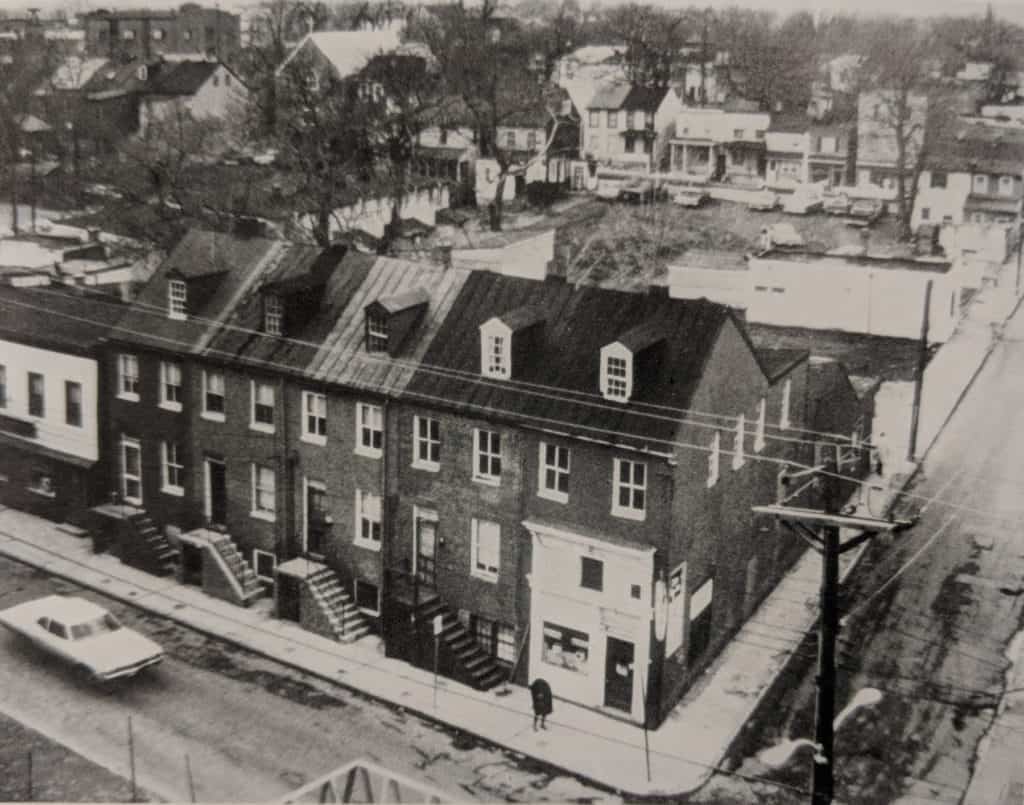
I stopped to greet a gaggle of neighbors in their 60s and 70s, each socially-distanced on their respective front porches in the adjoined row houses across from the Old Stanton, now the Stanton Community Center. One resident said she lived in that house “forever,” as had her mother, and her grandmother before her. When I explained my search through her neighborhood, she laughed heartily, “Oh girl, that stuff’s been gone for yeeeears!” She remembered that the businesses along Washington Street had been knocked down when she was in middle school, replaced by the concrete-slabbed Whitmore municipal parking garage. Even before that, she said, Wright’s Hotel was destroyed in a fire. Where it once stood, there’s now low-rise public housing. Were it not for the First Baptist Church of Annapolis, and a few original homes standing cheek to jowl, there’d be no proof that a Black metropolis once flourished here.
A Vanishing Past
I went to Baltimore on the same quest to find Green Book landmarks, but as in Annapolis, a church or a community center would lurk in the shadows, laughing at my failed attempts to turn back time. Anyone who lives in Baltimore will tell you that safety and appearance can change “block to block,” even within the same neighborhood. Yet, the Green Book seemed to highlight blocks across neighboring vicinities that today feel like very distinct communities. The 1935 Frederick Stieff city map shows that most of the Green Book sites were concentrated in what was then the lower fourth district. To be more precise, many sites were concentrated across the pentagon-shaped expanse between today’s Pennsylvania Avenue to the west, West North Avenue to the north, Jones Falls Expressway to the east, and Franklin Mulberry Expressway to the south. Upton, Druid Heights, Bolton Hill, and Midtown blended into one, as Black travelers saw attractions and accommodations generously scattered throughout.

The current neighborhoods of Bolton Hill and Pennsylvania Avenue stacked the largest number of sites in the “Birthplace of the Star-Spangled Banner.” With dozens of entries, these two neighborhoods had more sites than most cities in Maryland, including Hagerstown, Upper Marlboro, and Salisbury, which had just one entry per city in 1949. All along today’s 1200-1600 blocks of Pennsylvania Avenue it is possible to see what once was a thoroughfare for Black commerce. Three out of four salons, six out of seven taverns, and four out of five nightclubs in the 1949 Green Book were on “The Avenue,” which is still a popular shopping district today.
MR. GREEN’S GUIDE
The Green Book came back into public consciousness after the 2018 film of the same name, just as Black Lives Matter took up the issue of “driving while Black.” Contemporary concerns are reminiscent of the fears that inspired Green to write the books in the first place.
As an alternative to segregated public transport, middle-class African American families saw the advent of cars as a Godsend. Over time, prices became more accessible, but racial discrimination among dealers and lenders restricted Black car ownership. Increasingly, a car became a trophy of affluence, which only made the person behind the wheel an even bigger target for racist aggression. Being caught on an unfamiliar road, in an unfamiliar “sundown town,” could be the difference between life and death. One reader, William Smith, wrote, “It is a book badly needed among our Race since the advance of the motor age.” More than just a list of advertisements, the Green Book was a forefather to the now burgeoning Black travel movement. It facilitated safe navigation between the Black-friendly spaces across the nation that had little connectivity otherwise.
Cars came with a significant amount of fear, but they also brought an unprecedented degree of freedom. Day trips to Maryland’s Black-only beaches, like Highland, Sparrow, and Carr’s, were respites from both rural and urban life. Even now, Highland Beach is well remembered for hundreds of road trippers, converging for seaside concerts with Pearl Bailey and laughs with Redd Foxx. Today, the Frederick Douglass Museum and Cultural Center in Twin Oaks serves as a living memorial to yesteryear. The house was built in 1895 for Douglass, who intended to build a Black-owned resort community in the Mid-Atlantic. That dream is still deferred.
The New Albert hotel sat at 1226 Pennsylvania, where the Furman L. Templeton Prep Academy now stands. An internet search for the “Wagon Wheel Baltimore” returned photos of a gentlemen’s club on the outskirts of the city, instead of polaroids of the Wagon Wheel restaurant at 1638 Penn in Upton. Though books and newspapers tell old tales, it can be hard to see in today’s landscape exactly what life was like two generations ago.
For example, the large brownstones and historical buildings of Bolton Hill have symbolized affluence since the area’s founding in the mid-1800s. The mix of residents today looks nothing like the demographic a hundred years ago. It was a Whites-only area for decades during the early 20th century, when the Mount Royal Improvement Association restricted Black residency. By the late 1960s, urban renewal bulldozed affordable housing and White flight left space for more Black ownership of residences and businesses. While family-owned essential service providers, like the Estep Brother’s funeral service founded in the 1940s, still exist today, many tourist sites seem to have disappeared. One large exception is in Dundalk, where the Turner Station Museum honors the African Americans who flocked to the area for shipbuilding jobs after World War I. There, the Green Book listed a drug store and a nightclub. The latter was so famous that the listing included the name “Adam’s,” with no address. Rumor had it that you’d hear the music and see the crowds, and know exactly where to go.
Baltimore’s bouts with urban renewal in its fourth district parallel stories from Annapolis’s “Old Fourth Ward.” The tune of local greats like Billie Holliday has changed over time. In the wake of Martin Luther King’s assassination in 1968, racial tensions led to looting and riots throughout Northern cities. Pennsylvania Avenue, especially its White-owned shops, were not spared. White business owners and the Black middle class never fully came back, but the sounds of music and the vibrant arts culture are ushering in a new wave of revitalization in Charm City.
Reckoning with History
The summer of racial reckoning has brought, along with its call for public accountability, a call to support Black-owned businesses, but few national guides like Green’s exist today. Instead, there are Facebook groups, Yelp! reviews, and age-old word of mouth. As in the past, it is difficult to confirm which locations are inclusively run and which are actually Black-owned. The 2020 ABC Green Book is the most comprehensive collection, but Maryland has only 13 locations for accommodations and most are mainstream chains, like the Residence Inn at National Harbor, that don’t display their ownership profile. However, Baltimore has two iconic Black-owned venues, which could not be more different from one another. Their contrast gives us a sense of the diversity among Black-owned hospitality providers, then and now.
Travelers seeking a luxury escape can visit the Ivy Hotel on 205 E. Biddle Street. It has eight suites and 10 rooms in a mansion in Mount Vernon, on North Calvert Street (familiar name from Annapolis) and Biddle Street. At $500 per night, guests can enjoy the only Relais & Chateaux property in Maryland. Opened in 2014, the hotel is co-owned (with the Azola family) by an African American family. Eddie & Sylvia Brown met at Howard University in the 1960s and have turned their love for business and Baltimore into a high-end oasis in a veritable concrete jungle.
Travelers seeking a more local experience can try Phoenix Risin’ Bed and Breakfast in Bolton Hill. Black-owned and operated since February 2000, its three themed rooms start around $110 per night. They bear exotic names like “the Serengeti” and “the Haitian room.” In true DIY fashion, the B&B has a simple website that leads travelers to book directly with the owner, Janice Orr, who is also Managing Partner at her own law firm.
Social media makes finding a Black-owned business an endless digital treasure hunt. Online self-promotion draws tourists and residents alike to fan favorites like the Gallery Myrtis and Drama Mama Bookshop, which happen to be both Black and woman-owned. The idea of ownership and leadership combine in ABC Green Book, which even goes so far as to note that BWI Thurgood Marshall Airport’s Executive Director/CEO is African American. That airport welcomes an estimated 26 million visitors per year, making Baltimore and the state of Maryland a flagship for diversity and inclusion within the upper ranks of the transportation and tourism industries.
While Annapolis brings in just over two million visitors per year, the Anne Arundel County directory of minority- and female-owned businesses show no African-American owners of hotels, motels, restaurants, or bars. in contrast to the days of the Green Book. As soon as COVID permits, Janice Hayes Williams will offer guided walking tours of her hometown. Her newly founded company, Old Legacy Tours, will lead scenic strolls that highlight Annapolis’ Black cultural history. She will uncover the untold stories behind the Black churches and historical landmarks that make the Chesapeake Bay an unparalleled melting pot of American history.
Rediscovering Lost Stories
Over the coming years, tourists to Maryland will have a plethora of historical sites to check off their “must-see” lists. Given current realities, many of these experiences and exhibitions have been digitized. For example, Historic London Town & Gardens has an online repository of profiles of two dozen enslaved Africans and African Americans known to have resided in the town. Executive Director Rod Cofield says they have confirmed approximately “900 enslaved people associated with London Town over the course of the 1700s.” London Town has requested UNESCO World Heritage Site of Memory status and it will soon house commemorative markers from The Middle Passage Ceremonies and Port Markers Projects. These efforts to amplify the personal stories of the African Americans who lived and toiled in the town during the colonial era will surely diversify the ways that slavery and colonial life are taught and considered in public consciousness.
Similar efforts are underway in Havre de Grace, where there is much anticipation around the “Underground Railroad” exhibit at the local Maritime Museum. The permanent exhibit will map Harford and Cecil counties’ bouts with bondage and freedom seeking, particularly using the waterways of the Chesapeake Bay and the Susquehanna River to navigate escape. In more contemporary history, students of the Havre de Grace Colored School Foundation launched a project to recover alumni narratives from the 1930s–1950s. The school sits at 555 Alliance Street, just a stone’s throw away from the historical downtown district, which now has a self-guided digital walking tour, “the Lafayette Trail,” available on the DISTRX app. The lack of mainstream inclusion and the aging of former students has fueled the oral history project meant to showcase those soon-to-be-forgotten memories.
They follow in the footsteps of the Hosanna School Museum, the first Black school in Harford County. Founded in 1867, immediately after the Emancipation Proclamation was signed, it became one of 18 “colored schools” in the county. Today, it is one of a few still standing. The land was originally purchased in 1822 by a free Black man named Cupid Paca, whose son later sold a small lot to make a schoolhouse. Although there are current restrictions on in-person tours, the Museum still has online activities and is expected to host its Juneteenth celebration online
in 2021.
Finally, this autumn will welcome the return of Annapolis’s famed Kunta Kinte Festival on Sept. 25, 2021. Since 1987, the annual celebration has honored Kinte, one of 98 enslaved people brought from the Gambia to Annapolis aboard the Lord Ligonier in 1767. While there is dispute as to the true origins of the protagonist in Alex Haley’s Roots, the festival memorializes Africans, African Americans, and Caribbean people of African descent whose first arrival in the United States was through Maryland’s port cities. The festival acknowledges both the unsettled past and the unfolding future of the Chesapeake Bay’s African American heritage, which seem to be growing more visible to residents and more frequently visited by tourists with each passing year.

